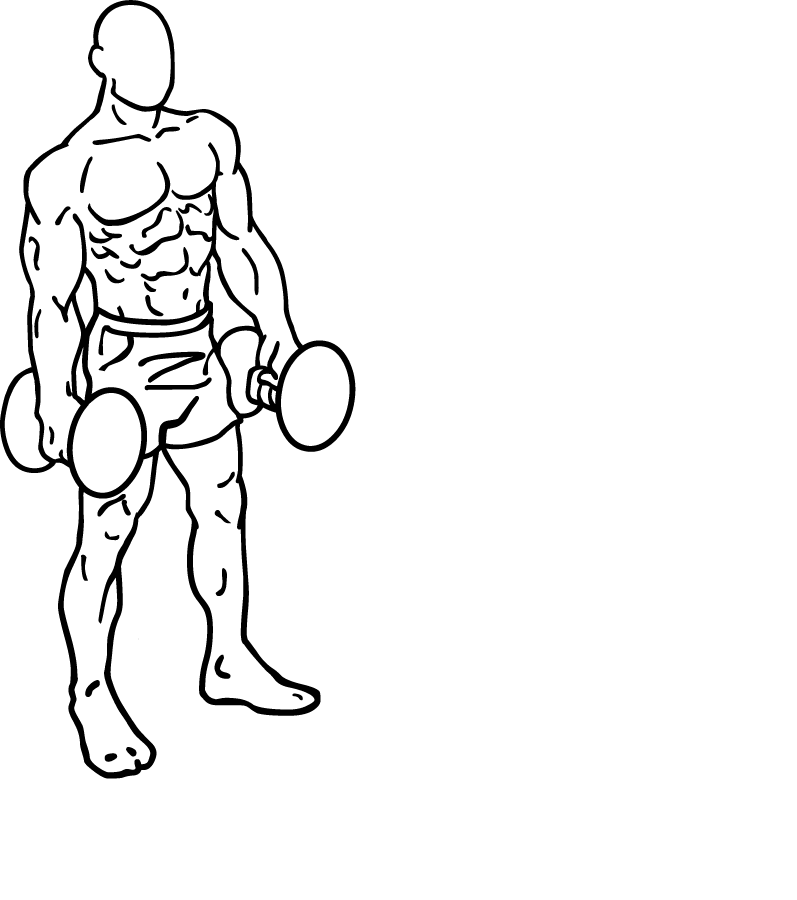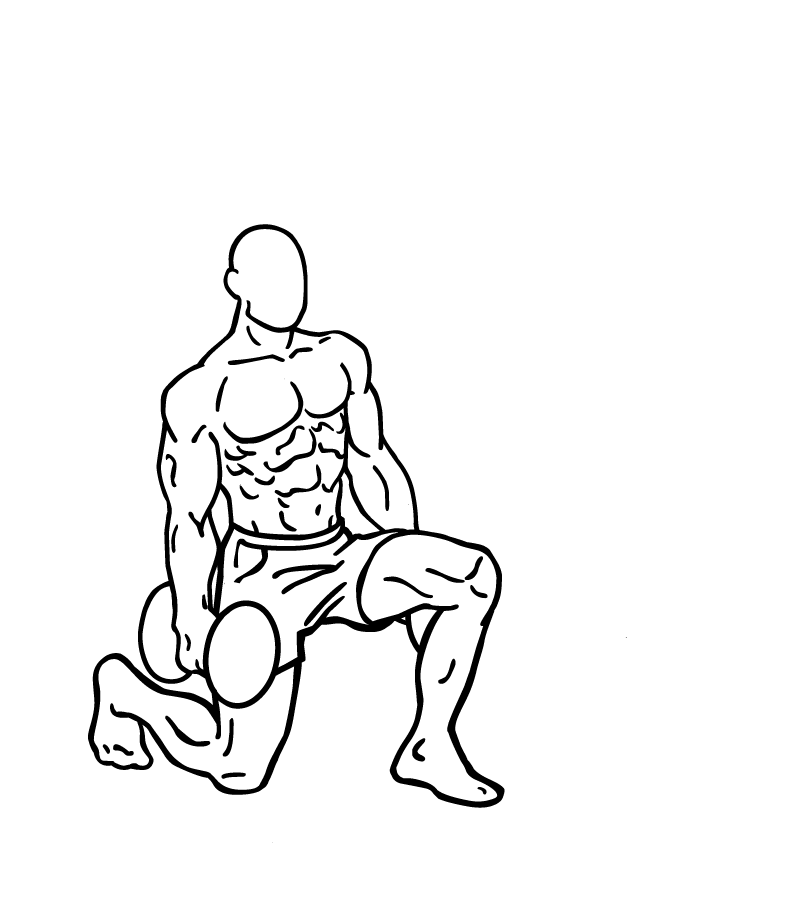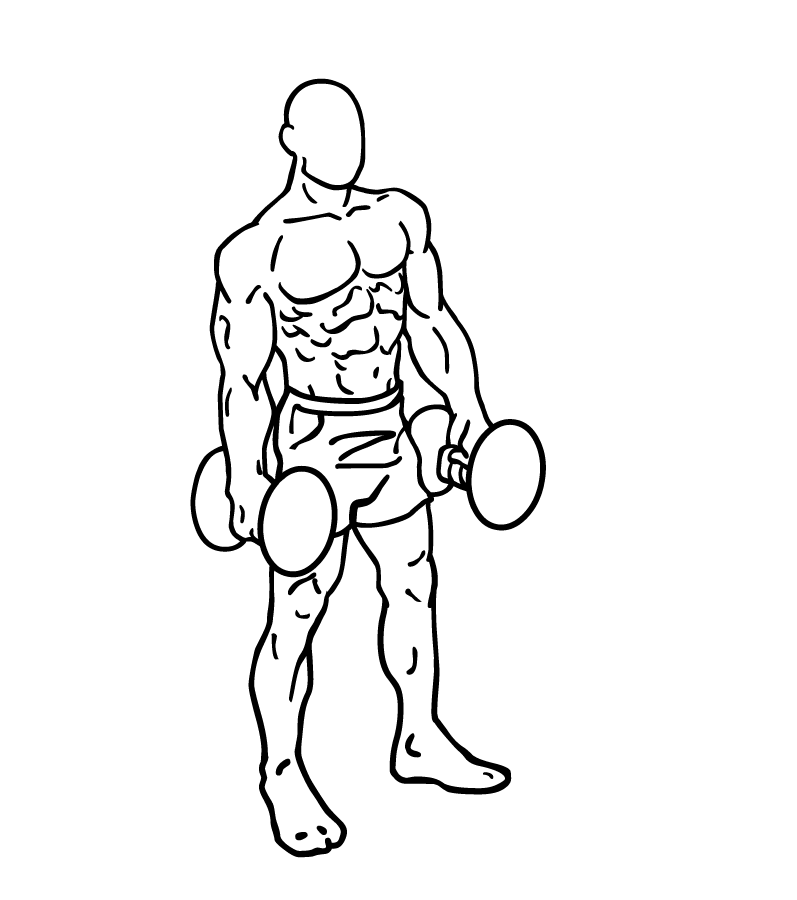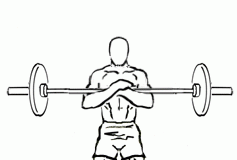Last Updated on February 1, 2025
The Walking Lunge is a dynamic lower-body exercise that targets the quadriceps, hamstrings, glutes, and core. Unlike stationary lunges, walking lunges add movement, requiring greater core engagement for balance and coordination. This makes them an excellent functional strength exercise that translates well to sports, daily activities, and overall lower-body endurance.
Walking lunges also help improve flexibility, stability, and unilateral strength, as each leg works independently to stabilize the movement. Whether you’re training for strength, athleticism, or fat loss, walking lunges can be a highly effective addition to your workout routine.
How to Perform Walking Lunges
Setup:
- Choose Your Equipment – Perform lunges with body weight, dumbbells in each hand, or a barbell placed across your upper back for added resistance.
- Find an Open Space – You’ll need room to step forward continuously. A flat, non-slip surface is ideal for proper foot placement.
- Stand in a Neutral Position – Begin with your feet about 8 inches apart, toes pointing forward, and core engaged.
Execution:
1. Step Forward with Control
- Take a large step forward with one leg.
- Keep your abs engaged and chest lifted—avoid leaning forward.
2. Lower into the Lunge
- Bend both knees until your back knee is just above the ground (around 1-2 inches off the floor).
- The front knee should be at a 90-degree angle, directly above your ankle—avoid letting it extend past your toes.
- Keep your back straight and your shoulders aligned with your hips.
3. Pause and Maintain Stability
- Hold the position briefly to engage your muscles fully.
- Keep your weight evenly distributed—don’t let your front knee collapse inward.
4. Push Through and Step Forward
- Press through your front heel and push off with the back foot to propel forward.
- Step the back foot forward and transition into the next lunge with the opposite leg.
5. Continue the Motion
- Repeat the movement in a straight line, alternating legs with each step.
- Focus on maintaining a steady rhythm and good posture throughout.
Common Mistakes to Avoid
❌ Overextending the Step – Taking steps that are too long or too short can strain the knees or reduce effectiveness.
❌ Leaning Forward – Keep your upper body upright and avoid excessive forward bending.
❌ Letting the Knee Touch the Ground – Lower until just above the floor to maintain tension in the muscles.
❌ Using Momentum Instead of Control – Move slowly and with purpose rather than rushing.
❌ Neglecting Core Engagement – Keep your abs tight to help with balance and posture.
Modifications & Variations
🔹 Beginner Modification: Perform stationary lunges first, or do walking lunges without weights until you build strength and balance.
🔹 Advanced Variation:
- Add dumbbells or a barbell to increase resistance.
- Perform walking lunges with a twist, rotating your torso toward the front leg to engage the obliques.
- Try reverse walking lunges for added difficulty and different muscle activation.
🔹 Explosive Variation: Incorporate jumping walking lunges for increased power and agility.
Benefits of Walking Lunges
✔ Strengthens the Lower Body – Targets the quads, hamstrings, glutes, and calves.
✔ Improves Balance & Coordination – Engages core muscles to stabilize the movement.
✔ Enhances Mobility & Flexibility – Increases hip and ankle flexibility while improving range of motion.
✔ Boosts Functional Strength – Mimics real-life movements, making it beneficial for sports and daily activities.
✔ Great for Fat Loss – A compound movement that burns more calories than isolation exercises.
Recommended Sets & Reps
👉 For Strength & Muscle Growth: 3-4 sets of 8-12 reps per leg (use added weight).
👉 For Endurance & Conditioning: 3 sets of 12-15 reps per leg (bodyweight or light dumbbells).
👉 For Explosive Power: 3 sets of 6-8 reps per leg (jumping lunges or heavier weights).
Pro Tip:
✅ If you’re new to walking lunges, start without weights to perfect your form. Once you’re comfortable, gradually add resistance to increase intensity and strength gains.
Incorporate Walking Lunges into your leg day, full-body workouts, or HIIT circuits to develop strength, stability, and athletic performance! 💪🔥









